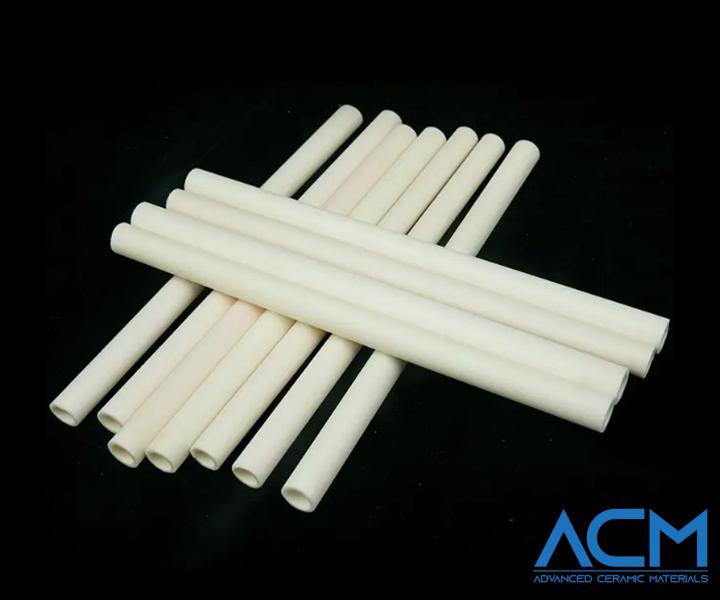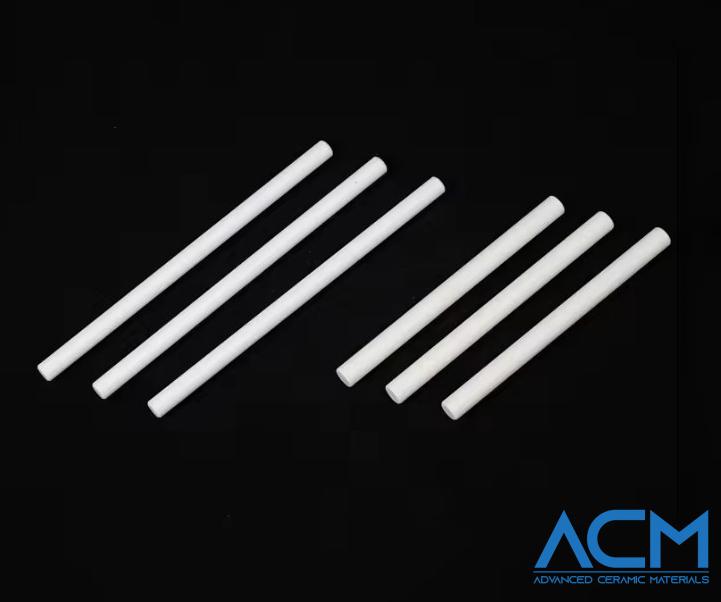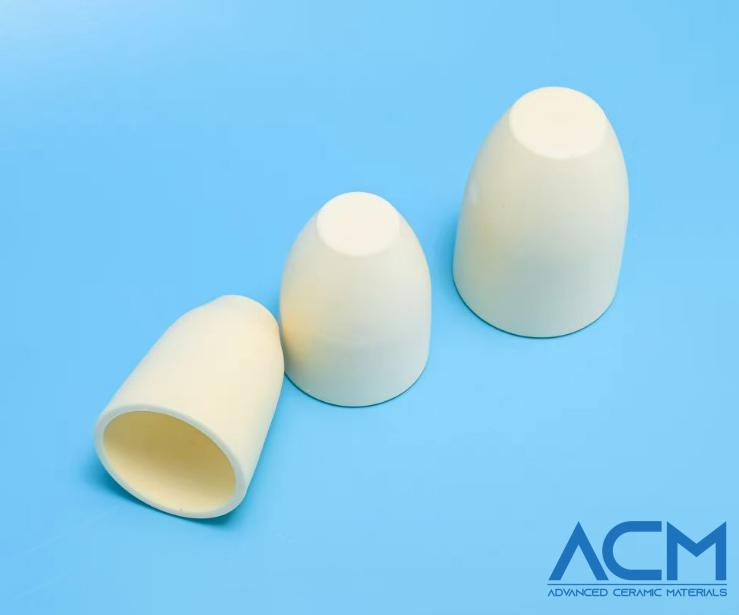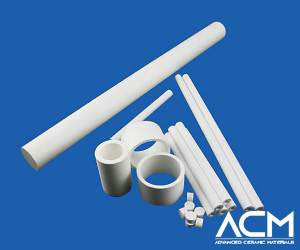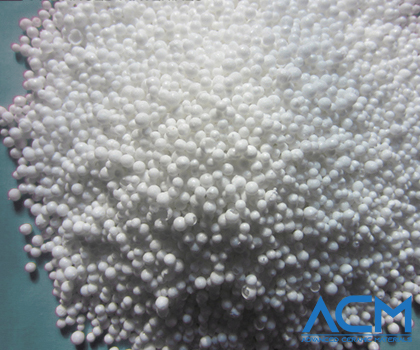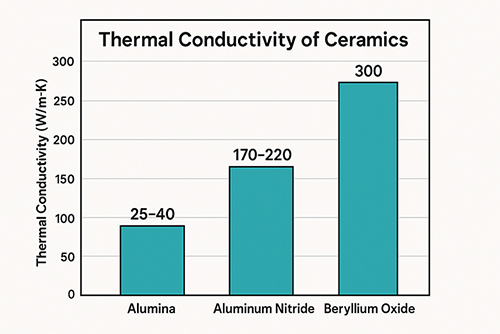Everything You Need to Know about Alumina Ceramics

Alumina ceramics are advanced ceramic materials basically composed of aluminum and oxygen. Aluminum oxide ceramics are favored among many manufacturers for a variety of factors, such as high thermal conductivity, their insulating capability, resistance to corrosion, high melting point, and extreme hardness. For these reasons, they are preferred for several manufacturing processes. Here, we’ll discuss the properties, production, and application of alumina ceramics, as well as all other useful pieces of information about alumina ceramic materials. Let’s dive in already!
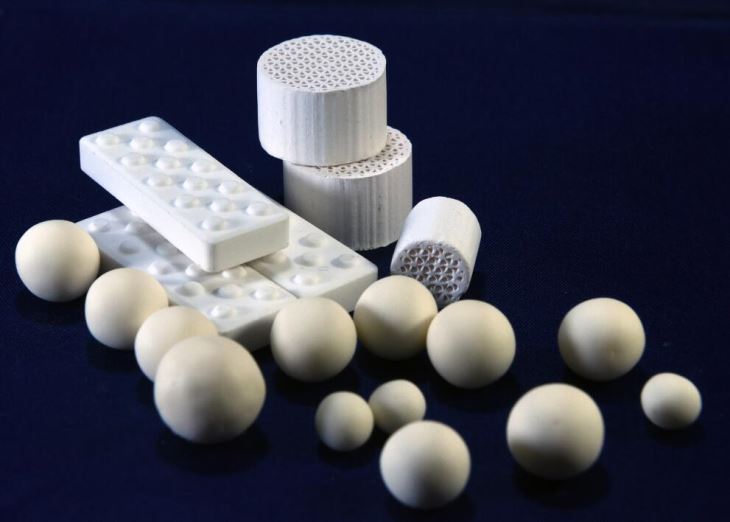
What is Alumina Ceramic?
Alumina ceramic, also known as alumina or aluminum oxide (Al2O3), is an industrial oxide ceramic known for its extreme hardness and high thermal conductivity. The properties of alumina ceramics make them one of the most widely used ceramics for structural, wear, and corrosive environments. Alumina ceramics are typically manufactured from bauxite and can be shaped using injection molding, die pressing, isostatic pressing, slip casting, diamond machining, and extrusion. Like aluminum nitride and other important engineering materials, alumina can be produced by dry press and sinter or by hot pressing using appropriate sintering aids. Alumina-based ceramics are one of the most studied and characterized advanced ceramic materials known today. Due to the important combination of properties, their behavior has been thoroughly researched. Alumina is characterized by high hardness, excellent resistance to corrosion, thermal stability, good dielectric properties (for converting from DC to GHz frequencies), low loss tangent, and stiffness. See the next section for more details on the properties of alumina ceramic materials.
Properties of Alumina Ceramics
- Depending on the content of Al2O3 and additives used, there are different series of aluminum oxide mateials.
- Based on the Al2O3 content, alumina can be categorized as 75% alumina, 85% alumina, 95% alumina, 99% alumina, and so on.
- Based on the difference in crystal phase, there are mullite, corundum-mullite, and corundum;
- Based on the variety of additives used, there is the chromium corundum, titanium corundum, etc.
- Alumina is an excellent electrical insulator that is resistant to extremely high currents, and its resistance to electricity increases with its purity. The more pure alumina is, the higher the resistance would be.
- Alumina is also known to have a very high melting point and strong mechanical strength. However, its mechanical strength decreases when the temperature goes above 1000 degrees Celsius. Due to the vast difference in its coefficient of thermal expansion, its resistance to thermal shock is less effective when exposed to very high temperatures.
- The excellent chemical stability of alumina is the major contributor to its high resistance to corrosion.
- Alumina is also slightly soluble in strong acid (such as hot sulfuric acid and the hot HCl and HF also have some corrosive effect.) and alkaline solutions, but does not dissolve in water. Pure alumina can resist chemical corrosion, making pure alumina the main choice for engineering components in several industrial applications. Its resistance to corrosion by chemicals has been shown to be due to its low solubility in those chemicals.
- The introduction of additives can enhance the physical and chemical properties of alumina. These additives, combined with different production processes, can help in the production of alumina ceramics of varying sizes and shapes.
- Alumina ceramic materials have the lowest vapor and decomposition pressures.
- As you already know, alumina ceramics are similar to aluminum nitride based on their good thermal conductivity and good electrical insulation properties.
Application of Alumina Ceramics
- Because of their excellent chemical stability, alumina ceramics are used widely in acid-resistant pump impellers, pump bodies, acid-carrying pipe linings and valves.
- Aluminum oxide ceramics are used in the manufacture of textile wear parts and knives. This is due to their extreme hardness and wear resistance.
- Aluminum oxide is the most commonly used abrasive grain in the woodwork and metalwork industry. This is because it does a better job than silicon carbide on several materials, including bare wood, painted surfaces, and metal.
- Alumina ceramic materials are used in making spark plugs, which are useful in a wide variety of engines.
- Transparent alumina ceramics are used in making high-pressure sodium lamps and infrared detection window material.
- With an alumina content higher than 95%, alumina ceramics can be used as excellent electrical insulators. They also have a low dielectric loss, with a wide range of applications in electronics and electrical appliances.
- Transparent aluminum oxide shows good permeability to visible light and infrared rays.
- Other essential applications of alumina ceramics can be seen in seal rings, medical prostheses, laser tubes, thermocouple tubes, electronic substrates, ballistic armor, electrical insulators, grinding media, and wear components.
Further Reading: What is the Transparent Ceramic Material
Conclusion
Alumina ceramics are composed of aluminum oxide. The high thermal conductivity, high resistance to heat, excellent electrical insulation property, and high resistance to chemical corrosion of aluminum oxide mateials are some of the factors why they are a choice material for many industrial processes. Thank you for reading our article and we hope it can help you to have a better understanding of alumina ceramics. For more information, please visit https://www.preciseceramic.com/.
Further Reading: Ceramic Material Selection Made Easy: A Buyer's Guide to Key Properties
{{item.content}}
LEVE A REPLY
{{item.children[0].content}}
{{item.content}}
LEAVE A REPLY
SUBSCRIBE OUR NEWSLETTER
- Boron Nitride in Cosmetics: Enhancing Performance and Sensory Appeal
- Maximize MOCVD Yield and Purity with Hexagonal Boron Nitride Setters
- What Are the Advantages and Uses of Boron Nitride Ceramic Sheet?
- The Compression Annealing Advantage for Pyrolytic Boron Nitride
- Beyond Insulation: The Surprising Spectrum of Ceramic Thermal Conductivity









